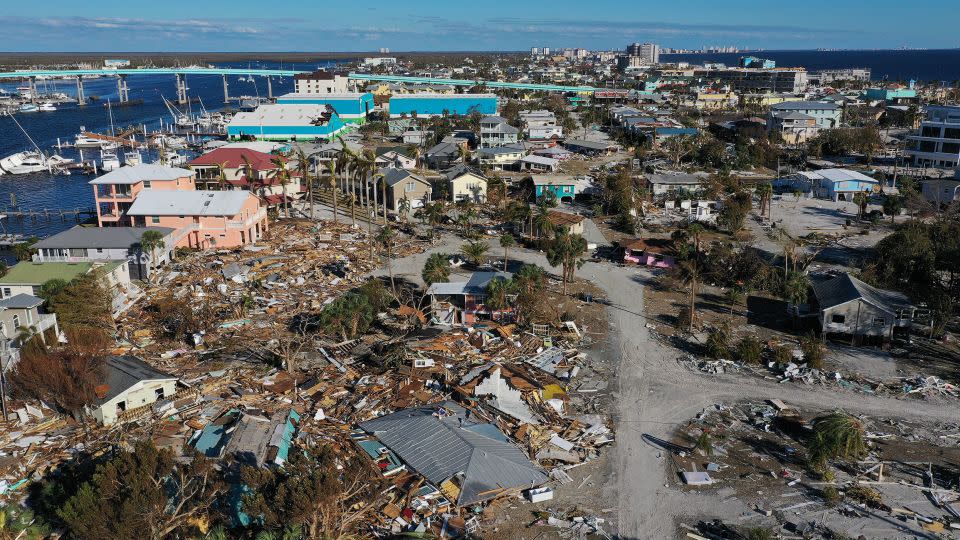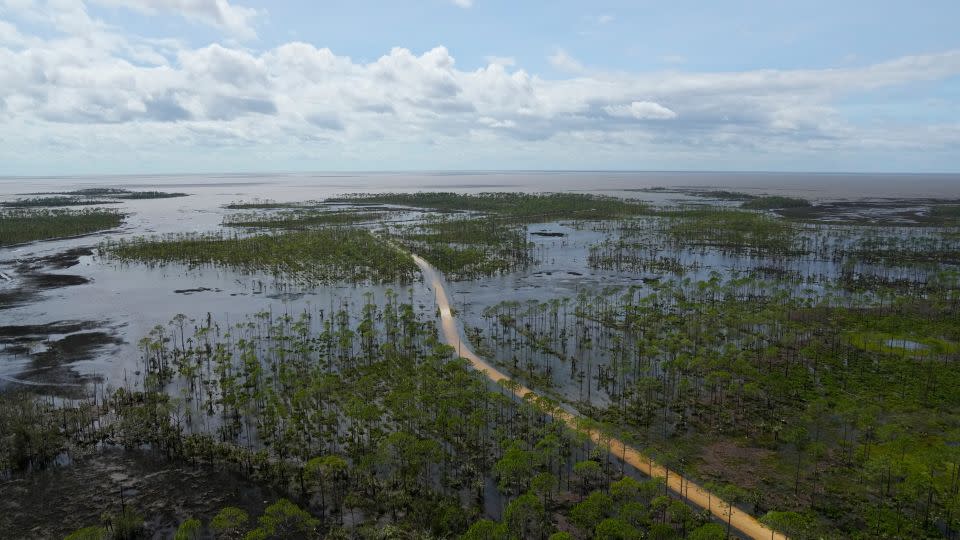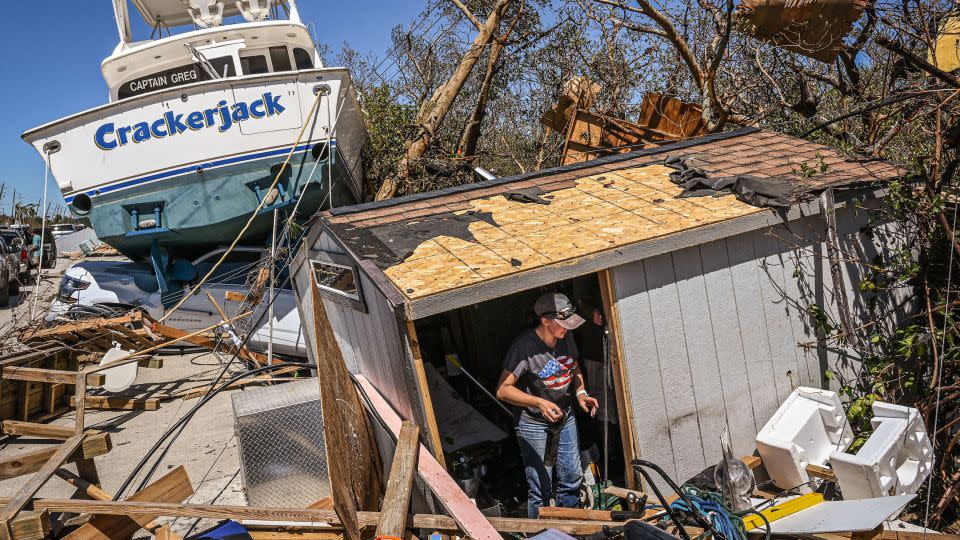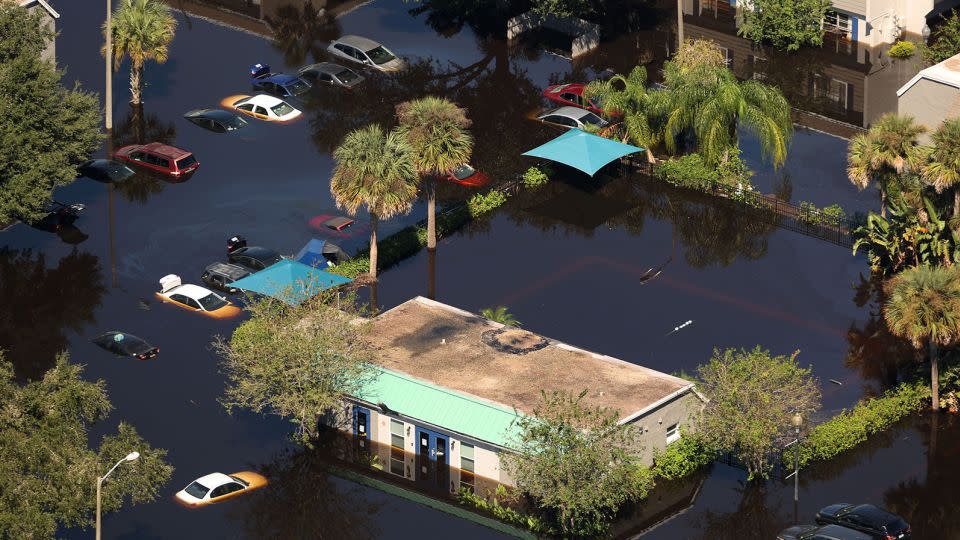The biggest difference between hurricanes Ian and Idalia? Where – and what – they hit
The full scope of Hurricane Idalia’s destruction is still coming into focus, but experts say one thing is clear: It could have been more like the damage wrought by Hurricane Ian had it hit anywhere else on the Florida coast.
Idalia and Ian shared key characteristics: Both were major hurricanes with huge destructive potential and life-threatening storm surge. Both also rapidly intensified as they approached landfall — something experts say has been happening to storms more frequently.
But the places they struck were remarkably different.
Category 4 Hurricane Ian made landfall in a high-density area with vast barrier island development. Category 3 Hurricane Idalia, while certainly the weaker storm, made landfall in a low-population area known for its marshlands and woodlands.
“You’re talking about a very urbanized area versus an extremely rural area,” Jeffrey Carney, professor and director of the Florida Institute for Built Environment Resilience at the University of Florida, told CNN. “That’s the biggest difference — one of those areas has beautiful sandy beaches, and the other one is mostly mangroves.”


Ultimately, how impactful a storm is depends on what natural features exist in the area, how it has been designed to withstand extreme weather and the scale of human exposure.
And for the places hit by Ian and Idalia, the differences were stark.
Coastal development means more flood exposure
As someone who has worked with communities along the Big Bend region on climate adaptation, Kathryn Frank, a professor of urban planning at the University of Florida, said she was not surprised by the impacts of Hurricane Idalia.
“It comes down to exposure,” Frank told CNN. “At the large scale, it’s more a function of just not having development there to be damaged.”

Coastal development is putting people and properties at risk just as much as the storms are. Hurricane Ian slammed into one of the fastest-growing areas of the country and put hundreds of thousands of people in harm’s way. It ended up being Florida’s deadliest storm in nearly a century and was the second-costliest disaster on record after Hurricane Katrina in 2005, according to one analysis.
“It did strike me as a big omission in the hazards planning, emergency management-type fields that they weren’t thinking about future growth as part of the equation,” said Frank, who is working on a few projects in Florida cities that account for population growth.
While it’s hard to imagine hurricane-induced storm surge and flooding more frightening than what Hurricane Ian and previous major storms have caused along the Gulf, researchers say that more extreme events are coming — and that if communities fail to build back smarter, the devastation could be worse the next time around.
“Not only does continued development in these areas put people and homes and businesses at risk, but it also compromises these areas’ abilities to absorb the energy and flooding associated with storms,” said Serena Hoermann, assistant director for the Center for Urban and Environmental Solutions at Florida Atlantic University.
The power of nature
Hoermann told CNN that as a storm is imminent, we focus on our built environments to help protect human life: roads to evacuate on, sea walls to protect us from surge.
But well before the storm, the focus should be on how nature can help build up our resiliency along the coast, such as “our barrier islands or dunes or coral reefs, our wetlands, because those are vitally important assets that protect us from storms and provide our livelihood.”

Experts told CNN the Big Bend area of Florida was spared the worst not only because it was sparsely populated, but also because nature-based features — coastal wetlands, woodlands and mangroves — acted as buffer.
“Nature can certainly provide those sorts of mitigating functions of maybe like, if you had a marsh versus a seawall, right — it can absorb more water and kind of slow it down,” Frank said.
One study found that mangroves in Florida protected about 625,000 people and prevented $1.5 billion in direct flood damage during Hurricane Irma in 2017. According to a study from The Nature Conservancy, a healthy coral reef can reduce 97% of a wave’s strength and energy before it hits the shore, serving as a buffer from potentially destructive cyclones.
Florida is going to keep building, Carney said – it’s just a matter of how to do so in a way that minimizes risk in a place constantly vulnerable to storms like hurricanes Ian and Idalia.
“As we think about our cities, there’s a lot of responsibility to fix and adapt and transform cities,” he said. “I’m not saying we should keep building bad architecture at the fringes of our cities, but we need to reinvest and transform our environments.”
For more CNN news and newsletters create an account at CNN.com

